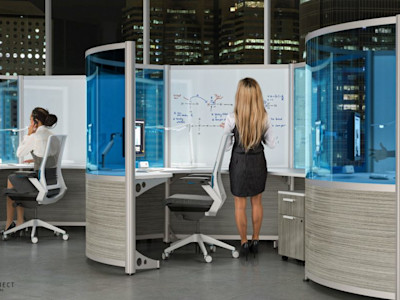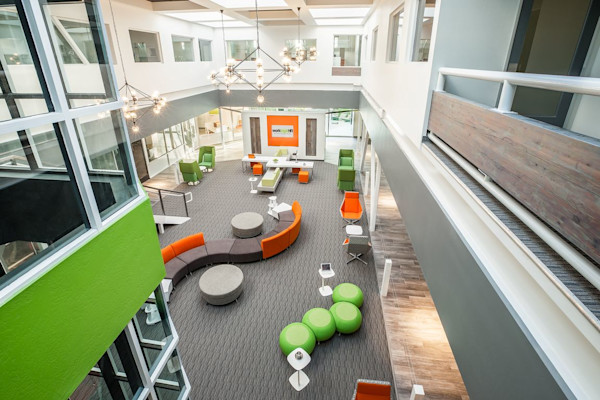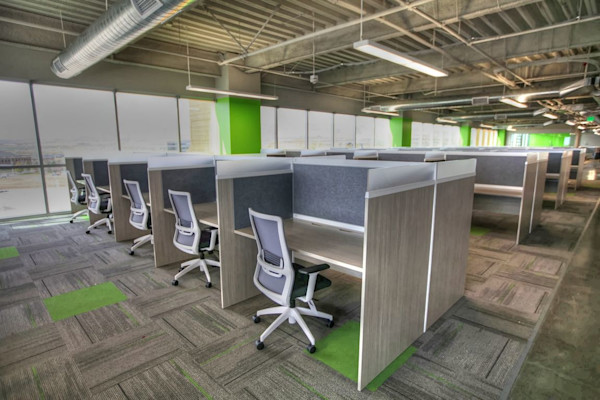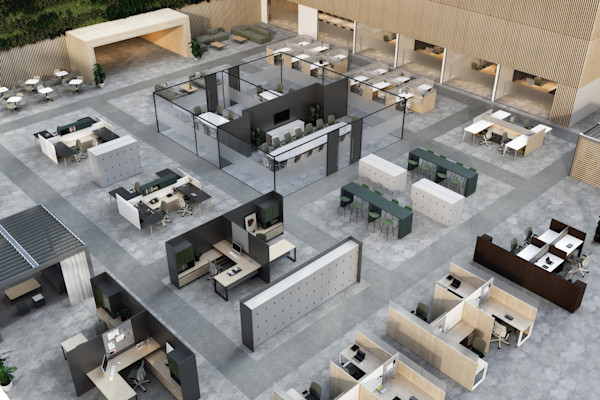Office Vacancy and the Fall of the Traditional Office

Even five years out, we’re still talking about how the 2020 COVID-19 pandemic has shaped the workplace. It changed our lifestyles. It changed the way we work. Most of all, it changed the future of work and posed a new problem – office vacancy. For a while, employees who were required to return to work early on worked behind protective barriers, divided workstations, and staggered attendance policies to limit the number of people in a space at one time.
For those who were a part of the workforce during that time, it was a different experience. It was a time of many unknowns. There was a moment in time when we didn’t know if we would ever return to what we remembered as “normal”. However, even with the progress we’ve made returning to that norm, there’s a lot that the pandemic left its mark on.
There’s a lot of talk about the hybrid model and how companies across many industries are adopting it. Automation, technology, and practices implemented out of necessity have made working remotely – at least partially – more than possible. Workers have been able to thrive. However, it’s not companies or employees that are facing the lasting impact four years later. It’s the landlords, the real estate companies, and the developers who have been left still trying to find a way to make it back to where we were several years ago.
The Impact 2020 had on Office Vacancy
As we entered 2020, we saw a mass exodus from the traditional office. Some of this was driven by government mandates, while others were out of concern for employees and their well-being. Regardless of the reason, it’s safe to say that companies and landlords probably didn’t know what the future held. Largely, both companies and the commercial real estate market saw unforeseen losses without a way to recover. Office vacancy became a huge concern for many, and for the majority, it still is.
Office vacancy has had its ups and downs since 2020. We’ve seen spikes in occupancy month over month and dips that are difficult to anticipate. The impact that the pandemic had on office vacancies is long-lasting and leaves many still trying to recover their losses. Many wonder what’s in store for the traditional office.
Is There a Future for the Traditional Office Despite Office Vacancy?

Find out how to design the new traditional office
According to a 2024 office market statistics report from Colliers, the average vacancy rate for the top ten office markets is 22.48%. While there are a lot of factors that play into the rates of different markets, such as industry, changing population density, and proximity of office buildings to employees, across the board, there have been no signs of large bouncebacks. This means that landlords, developers, and the commercial real estate market are having to shift.
A lot of time has gone into studying the viability of the hybrid model and whether or not it will work in the long run. While a lot of companies have had success with the hybrid model, others have not. And some are still testing the waters. The hybrid model has stunted occupancy rates. Although a lot of companies operating with a hybrid model don’t have the same needs as before, they still need some sort of office space. But it’s far from traditional.
The fast rise and even faster fall of some coworking spaces over the past few years has given companies a glimpse into what they need. It has shown them what’s too much and what’s not enough. Companies have found that sweet spot and have been able to adjust, but traditional offices are still trying to adjust.
How Is Commercial Real Estate Deal with Office Vacancy?

Make the most of your existing office space
While some markets have it easier than others due to inventory, availability, and geographic influence, there are still many that are struggling. Newer construction, industry growth such as the AI boom in San Francisco, and new sectors have helped some markets recover. However, not all markets are that lucky, and those that are, aren’t lucky enough to return to pre-2020 occupancy rates. Those markets that are facing steeper uphill battles than others are having to make adjustments to keep up with the times.
There has been a recent shift in preference to Class-A office space. Unlike office buildings located in less desirable areas or with limited functionality, the Class-A office spaces are the newest, top-of-the-line spaces. These high-quality, turn-key, and modern office spaces have found their place atop the commercial real estate market and they come with a larger price tag.
According to an article from BISNOW, rent for Class-A office space has increased by 2.4% while lesser office space rent has decreased by 1.2%. These Class-A rates are expected to increase or at least remain unaffected through 2025. But what is happening with the Class-B and C office spaces? The evolution of these lower-class office spaces has just as much of an impact on the commercial real estate market as the success of the Class-A spaces.
The Future of the Forgotten Office

Design an office that employees want to be in
Class B and C office spaces are pulling a page out of the upcycled office’s playbook. The trend of repurposing old industrial buildings or similar buildings and retrofitting them to be used as office buildings seems to be going by the wayside. With the rise of mixed-use spaces such as all-in-one retail, residential, and coworking spaces, it only makes sense for the less desirable office properties to follow suit. Enter residential conversion.
Four years has been a long enough period to realize what will work and what won’t work. It appears the slow return to normal might be slowing even more and even stagnating. This is leading to the conversion of office buildings into residential space. Although a lot of office space isn’t suitable for this conversion due to location or practicality, BISNOW shows that 1 in 6 U.S. office buildings are candidates for this new conversion strategy. So while class-A office space has found its target audience, developers are continuing to find a place for the forgotten office buildings.
Moving Toward the Future of Work

Bring your office into the future with StrongProject
Many companies don’t have the luxury of leasing class-A office space, let alone have access to it. Along with the landlords, developers, and commercial real estate groups, companies have found themselves in a difficult situation as well. High vacancy rates and low occupancy don’t mean that the businesses aren’t there. It means that there’s not necessarily an option to meet their needs. Simply put, what’s available is available.
The widening gap between class A and lower-class options is making it harder for companies that have unique needs. However, there are many ways companies are making what they have work for them. The hybrid model has made the smaller office space possible. The remote model has made the need for office space non-existent. And the hyper-flexible office has made starting with a blank canvas one of the best options.
The class B and C offices are doing their best to become more attractive to companies. More efficient, greener buildings are in high demand. Amenities are becoming more of a focus in office design. It has taken some time – four years – for everyone to find out what they need. The office isn’t dead. The future of work just looks a little different than we thought it would.
StrongProject Can Help
What’s just as important as an office building is what’s in it. The office space only plays a part in meeting a company’s needs. Whether you operate a hybrid model and need an adaptive workspace or are trying to improve a work-life balance, StrongProject can help you design an office that checks all of the boxes.
From our modern office cubicles to our collaborative lounge seating, wherever the office is where your employees hang their hats, we can help you make it feel like a class-A office space.
Contact StrongProject and let us help you shape your future of work!
Want to learn more about how the workplace is evolving? Check out these related posts:



